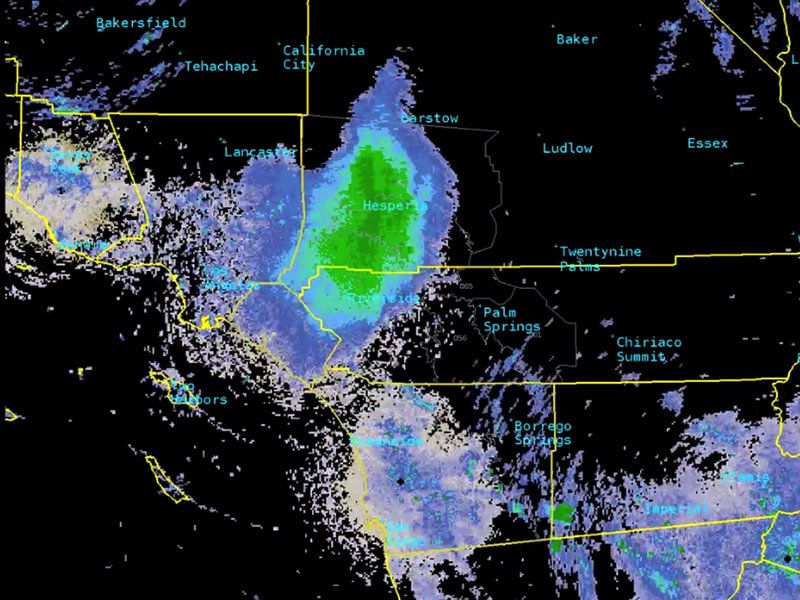The Rain Storm That Bugged Out

Pictured above is a radar map from the National Weather Service. As you’d expect, the reason that map exists is to monitor the weather — rainstorms and the like. In this case, the National Weather Service (NWS) noticed what appears to be a storm centered over the southern Californian city of Hesperia in June of 2019. And that’s notable because Hesperia doesn’t get a lot of rain, especially not in the summer. According to The Weather Channel (via Wikipedia), Hesperia averages only about 0.05 inches (or 1.3mm) of rain in a typical June, which makes sense; Hesperia is located in the Mojave Desert, after all.
So if you were living in that area and saw the map above, maybe you were excited about some heat-breaking, drought-defying rain about to come. Unfortunately, there was a bug in the system that day.
Or, rather, probably millions of bugs. Ladybugs.
While it’s not uncommon to see a solitary ladybug munching on a leaf or clinging to your window, more often than not, ladybugs can be found in packs. As a species, ladybugs like to hang out with one another, likely in hopes of perpetuating their lives and their family lines. As KQED notes, “scientists believe the behavior evolved as a way for a solitary species to reproduce and to cope with a limited winter food supply. After fattening themselves up, and before bedding down for winter, these ladybugs are getting together to take care of some final business—namely, mating.” And on that day in June of 2019, millions of ladybugs took the skies at the same time. The resulting blob pictured above measured about 80 miles by 80 miles (16,600 km2), or about the size of the state of Connecticut.
In this case, the ladybug swarm was large enough to look like an incoming storm, at least on the NWS’s super-sensitive radar. But unfortunately for those desert-dwellers hoping for rain, the bugs didn’t bring any water with them. And to add insult to injury, they also didn’t bring a good viewing experience. As the Los Angeles Times notes, though, the ladybugs weren’t densely packed over that whole region; the critters were “spread throughout the sky, flying at between 5,000 and 9,000 feet, with the most concentrated mass about 10 miles wide.” And they didn’t cause an eclipse or anything like that, either. An NWS spokesperson told the LA Times “I don’t think they’re dense like a cloud. The observer there said you could see little specks flying by.”
Oh well.
Bonus fact: Want your own ladybug swarm? If you have $10 and a mailbox, you’re in luck — you can buy 1,500 live ladybugs on Amazon. Incredibly, you can buy a lot of live animals online; Amazon also offers 500 live superworms, ten packs of glowing blue live shrimp, and other small critters. But if you want something bigger like, say, a chicken? You can still order online (e.g. here, for about $6 per day-old chick), but Amazon doesn’t carry them.
From the Archives: The T-Word You Couldn’t Talk About: The ban on saying “tornado.”
